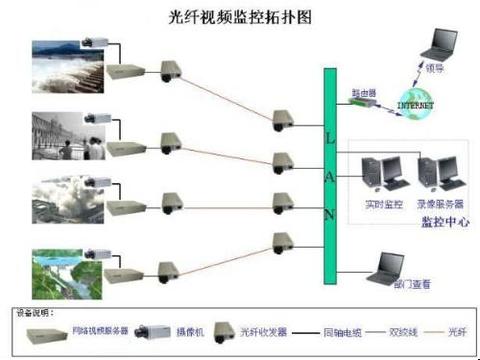 Network cameras are used to monitor systems, especially in the era of high-definition, and also accelerate the application development of network cameras. At the same time, with the increasing demand of people, network cameras are constantly improving and upgrading in terms of technology and performance, and new technologies are constantly being applied in rapid development. Here we analyze the technical trends of high-definition cameras.
Network cameras are used to monitor systems, especially in the era of high-definition, and also accelerate the application development of network cameras. At the same time, with the increasing demand of people, network cameras are constantly improving and upgrading in terms of technology and performance, and new technologies are constantly being applied in rapid development. Here we analyze the technical trends of high-definition cameras. In the development of image sensor technology for network cameras, technical specifications have been upgraded from HDDs (40 million pixels), 720p pixels (130 million pixels), to 1080p (200 million pixels). Obviously this has become a mainstream demand. The future 3 million, 5 million or 10 million pixels high-definition camera video surveillance project will continue to be applied more, it will be more clear on the road to pursue. In the hardware of image sensors, CMOS CCDs continue to seize market share in the era of high-definition network cameras, and CMOS has become the mainstream sensor. At the same time, CMOS technology is also continuously improving, increasing sensitivity, shortening exposure time, and low light. For example, the dynamic characteristics of widely used CMOS CCDs have become increasingly obvious. The CMOS sensor has a faster response speed than the CCD, and is therefore more suitable for high-definition monitor characteristic data. Pixels with ever-decreasing pixel sizes, miniaturized and power-efficient CMOS image sensors, will become the core of mainstream consumer products.
The market for encoding chips has been fiercely competitive, with more products ranging from Ti and Haas to domestic applications, and others such as Anba, Steps, NXP, and Trident. Haas new hi3518 chip, used in high-definition webcam, greatly improved the quality of the image, more cost-effective. Chip makers are also constantly improving their technologies, such as integrating ISPs, optimizing algorithms to improve video stability, and more cost-effective product introductions. H.264 is the current mainstream compression algorithm. However, as the video resolution continues to increase, the bandwidth and storage pressure of the stream increases. The h.265 algorithm is a representative of new technologies that increase compression efficiency, reduce delays, and other functions. H.265 limited bandwidth to transmit high quality video, only half of the original bandwidth plays the same quality video. Can use 1-2mbps transmission speed to achieve the 720P picture quality achieved, which also means that smart phones, tablet PCs and other mobile devices will be able to directly play 1080p full HD video online. The h.265 standard also supports 4K (4096×2160) and 8K (8192×4320) ultra-high definition video, and the h.265 network follows the steps of “resolution†video standards. The application of the h.265 algorithm has brought a new revolution to video surveillance vendors. ONVIF, pressure standards and other international agreements, are committed to globally open interface standards and promote the use of online video in the securities market. These interface standards ensure network video products from different manufacturers (web cams, video, surveillance platforms, interoperability, etc.) ). In the Chinese market, more and more companies are paying attention to the issue. The issue of the national standard GB/T28181-2011 is a reason for more compatibility. In the next few years, it will become a passport for the standard HD camera market.
4G refers to the fourth-generation mobile communication technology, which can transmit high-quality video image technology in a 3G and WLAN. From GSM, GPRS to 3G and 4G, technology is constantly evolving. 4G system can download speed of 100Mbps is 50 times that of 3G (WCDMA) Internet access, upload speed can reach 20Mbps, and can meet the needs of almost any user for wireless services. From the beginning to the present issue of 3G licenses, 3G wireless network cameras have also been applied in processes such as: 3G cruisers, 3G men, etc., and the wireless network video market has accelerated. Therefore, after the official commercial 4G technology, the market demand for wireless network cameras, especially wireless HD cameras, will increase significantly.
The characteristic of intelligent behavior analysis is the main application of the current video loss detection image block, people calculate the entrance, the remaining identification of the project, intrusion recognition, video motion detection, recognition, so the mass movement and congestion. From complex data analysis, determine the behavior and type of intelligent monitoring, provide operational instructions, data and information to implement alarm reminder attention, intelligent retrieval of intelligent behavior. Intelligent monitoring is an aid to prevent the occurrence of crime and improve monitoring efficiency. In addition, smart devices selectively transmit video, which effectively saves bandwidth and greatly increases the available network bandwidth utilization. The HD video camera's intelligent video algorithms can be embedded into the camera and become integrated smart HD cameras. Not only reduces the overall cost of the project, but also improves the efficiency of the monitoring system. The development of intelligent monitoring technology has become the main direction of market demand. Integrated intelligent HD network cameras will become the mainstream of intelligent video surveillance. Network cameras not only reduce the cost, but also reduce the equipment nodes and improve the reliability of the equipment. The development of intelligent monitoring and monitoring technology has become an important issue and market demand. Radio frequency identification technology is a network technology application that can identify specific targets through radio signals and literacy-related data without a particular target of the identification system established between mechanical or optical contacts. HD network cameras can also integrate RFID technology, video and positioning. High-definition network camera HD video imaging technology, network applications also provide a good foundation for the video information, HD network camera application wisdom will gradually increase the core.
China Searun Solar Solution Co., Ltd. , https://www.srsolarlights.com
